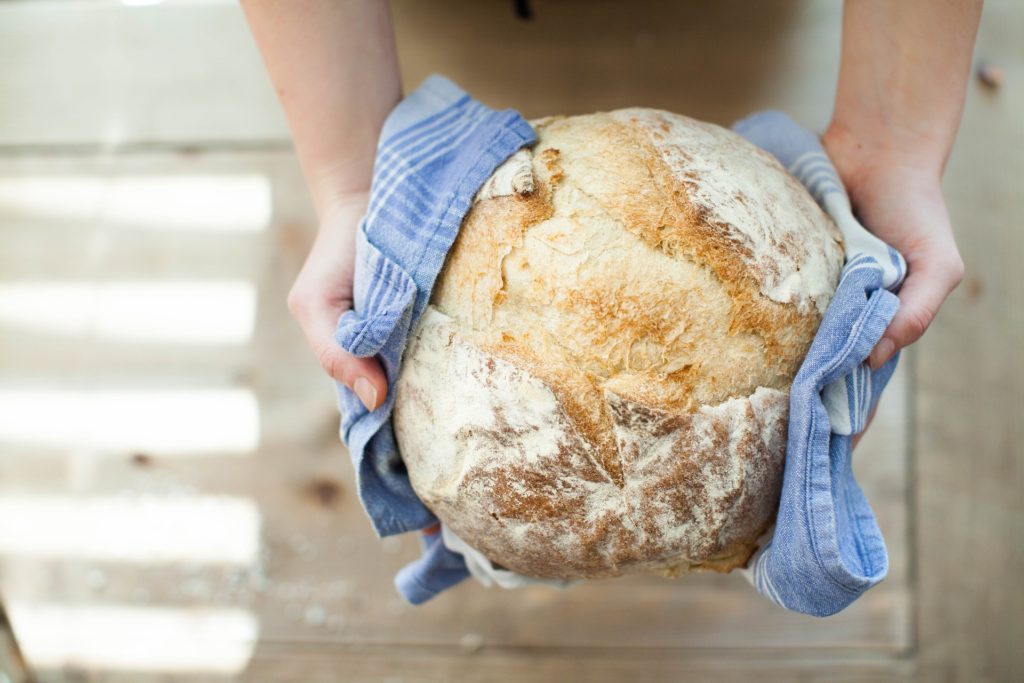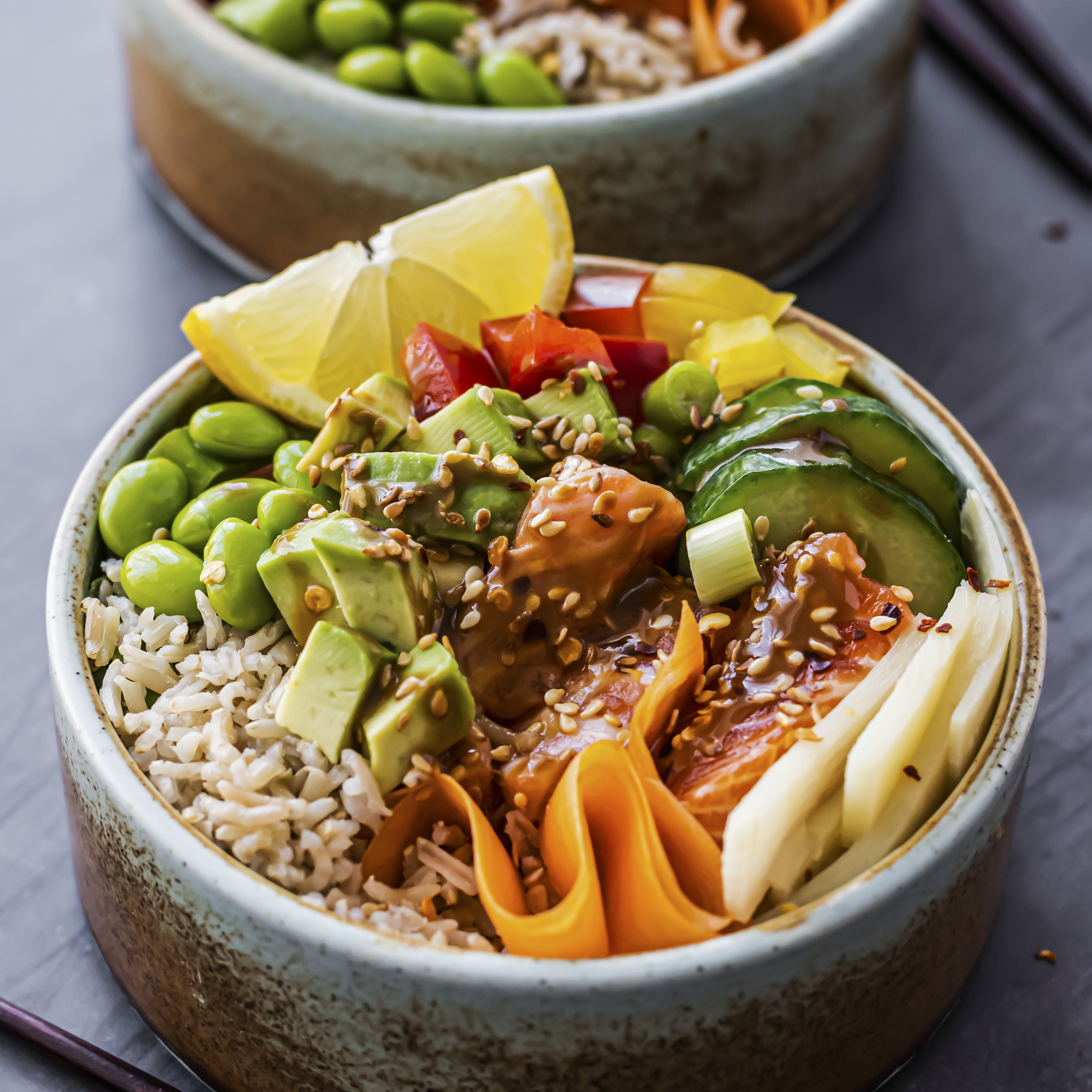YOUTH VOICES • FOOD UNIVERSE

Mind what you taste
Eating is more than replenishing our calorie needs. It can also become an extraordinary experience that opens us to the realm of memories, imagination and food treasures of our ancestral traditions
BY Jill Williams | Candidate Landscape Architect, Pretoria
THERE ARE few things in the world that can bring people from all walks of life together like music, dance, sports and food. Whether it be at family gatherings, weddings, church, school events or any large gathering, you will find one or all of these elements in place to help people interact with one another, enjoy the activities of the day, and to foster a general sense of togetherness.
Memories
Each of these have a common thread: they entice the senses and awaken emotional responses and even memories. Food in particular has a strong effect on the mind in recalling memories of textures, smells, people and places. According to Harvard University Press (2012), the hippocampus is the part of the brain that is stimulated when one eats. This is the storehouse of long-term and spatial memories, and is connected to the digestive system and parts of the brain that are important for emotions and smell. That, to me, makes a great deal of sense; the smell of imaginary chocolate seems to waft in my nostrils whenever I have a craving for it.
This can be of great advantage to the food industry. When catering for events, one can look to using food items that generally evoke certain emotional responses to match the atmosphere one would like to create. One might not include boerewors (grilled sausage) rolls in a wedding menu (unless it is specifically requested), as this generally is associated with a more relaxed, get-together type of atmosphere. So the type of food selected by caterers for their menus play a role in creating the right atmosphere for the events they cater for. Even chain stores and everyday families make use of this: think Wacky (burger) Wednesday and Pizza Fridays!

However, Peluse (2017) claims it isn’t exactly the food itself that makes the memory a good one, but rather the activities that surround or are linked to the meal. The laughter, conversation and activities of a day are wrapped up in the smell, taste and texture of what one consumes. Food becomes the capsule to these experiences, stored safely away in our minds, but easily retrievable through encountering flavours and fragrances of a similar specification.
The laughter, conversation and activities of a day are wrapped up in the smell, taste and texture of what one consumes
A unique experience
So, what role does food memory have on the food industry in terms of guiding food consumption patterns and behaviours? I once had a conversation with colleagues about this while eating out. We were out of town for a certain project and after the day’s work, we were famished. We set our minds on trying something new, and not succumbing to conventional chain stores to get dinner. So, with determination in our bellies, we walked for what seemed like an hour, (but it was probably far less), trying to find a decent place to eat. When we finally found one, it took some time to get a table as the restaurant, like most others in the area, was quite busy. The atmosphere was cozy and the décor was eclectic. When the meals we ordered arrived, I was underwhelmed by the portion, but the presentation and aroma thereof was immaculate. We determined that most of the time, a filling meal is preferred. However, one should open oneself up to the experience of dining. Eating out can be more than what you have on your plate: it’s the ambiance created by the soft, bohemian music in the background, the dim lighting that makes room for candle-lit meals, the low buzz of conversation that surrounds you—all leading up to the moment you taste the masterpiece before you. That simple meal of creamy gnocchi with butternut not only quenched my hunger, but transported me straight to the pearly gates of heaven. I doubt I will ever forget that experience.
There is value in both the practicality of low-cost-filling meals as well as the frivolity of overpriced dining experiences, because both can have a strong emotional effect on the consumer. Food triggers emotions and intangible connections; spatial memories are formed through our consumption thereof. Perhaps we ought to be more conscious of what it is we consume and where?

of the bread she ate during the drought. Credit: pixabay.
So, what about the ingredients that make up the food we consume? Does the choice in ingredients have an effect on the outcome of the memories we have of it? Can it even go so far as connecting us in some way to our past, our heritage and ancestry? In the book of 1 Kings 17: 7–16, the prophet Elijah asks the impossible of the widow of Zarephath: to bake him a loaf of bread from the last of her flour and oil—the last morsel of food she had available for her and her son. Through her obedience, she not only found herself having enough bread for her household for that day, but for every day till the three years of drought that had stricken the land was over. Years from that event, the widow must still have had the taste of the bread from that divine supply lingering in her mouth. Perhaps this experience even triggered in her mind the memory of stories told about her forefathers who wandered in the desert for over forty years, where they ate manna from heaven. Those light flakes of manna picked up from the dry ground of the wilderness, were used in the making of bread, cakes and biscuits. Her endless supply of oil and flour must have made her think: “This must be my manna from heaven.” The widow would have felt a connection to the thoughts and experiences of the Israelites of the Exodus, even though she never knew them personally or went through what they did.
Indigenous plants
Food security for our forefathers looked somewhat different. The first known people in southern Africa, the San, as well as tribes that followed, had to navigate their way through unknown territories through the process of hunter-gathering as they searched for resource-rich areas. Through this process they would have come across many indigenous species of edible plants that had the potential to be cultivated as a crop. Our experience of trying to find a decent restaurant must have been a far easier journey than what they must have gone through.
Indigenous crops are plants that grow naturally in a specific region that are fruit-bearing or whose various parts can be consumed or used for medicinal purposes. Rooibos and Hoodia are examples of indigenous crops that have been introduced into the global market for their many medicinal properties. The successful commercial growth and marketing of other indigenous crops, however, do not always occur as easily. Some become ‘orphaned’ or ‘lost’ along the proverbial path, due to their existence or importance being forgotten over time. These plants were once frequently collected from the bushveld and used by nomadic people for their medicinal, functional and edible qualities. I cannot imagine how many years of testing and proving were required to gain the plant knowledge to know the difference between these plants and to eventually distinguish the delicacy from the medicinal.

The San had to navigate their way through unknown territories through the process of hunter-gathering as they searched for resource-rich areas
Cullis et al. (2018: 2) claims that these crops, mainly in the form of legumes, are “staple food crops in many developing countries.” One such plant, the Marama Bean, has adapted over time to the extremely harsh conditions and poor soil quality found in the western portions of southern Africa. Some of its drought-adaptation mechanisms have increased its value as a nutritious, viable crop that can be cultivated for larger crop harvesting. Cullis claims that its seeds “rival peanut and soybean in composition and nutritive value”, and that its tuber, found below ground, is higher in protein and “much bigger and more nutritious than any potato, yam or even sugar beet.” This must have made for fine dining back in the day! In order to locate and harvest these crops, our forefathers must have utilized food memory as a method of survival: remembering the exact locations, seasons and conditions in which indigenous plants like these were found, making sure to pass this knowledge on to their children, who in turn would have their own memories of their food journeys.
We need more than the finished product; we need what constitutes the product to be good, in order to be filled and nourished
Creative eating
Times are tough and Rands are few, as the implications of staying-at-home due to COVID are still lingering in society financially and routine-wise. Thinking of new ways to make mealtime special, affordable, accessible (for those who do not have the means to get food regularly) and memorable, can be challenging. Imagine including an extraordinary crop like the Marama Bean in your garden and adding it to one of your favourite dishes? The addition of it will certainly give an old, bland meal new zest and will certainly give your family a healthy boost of nutrition, possibly even doing so when the belts have to be tightened. Most importantly, tapping into ingredients from the past, help us to connect to our heritage, our land and what it has to offer. We can choose to actively make good ‘food memories’ in a way that is specific to our context.
Herein lies the importance of food. It reminds us that we need more than the finished product; we need what constitutes the product to be good, in order to be filled and nourished. Man does not live on bread alone, but on the source of the bread (Matthew 4: 4, paraphrased). So let us be more conscious of what we eat, select ingredients that make up our food more mindfully and enjoy the symphony of textures, flavours and aromas on the journey.
| Dates To Remember |
|
April 2 – World Autism Awareness Day 4 – International Day for Mine Awareness and Assistance in Mine Action 6 – International Day of Sport for Development and Peace 7 – International Day of Reflection on the 1994 Genocide in Rwanda 7 – World Health Day 15 – Good Friday 17 – Easter Sunday 21 – World Creativity and Innovation Day 22 – International Mother Earth Day 23 – English & Spanish Language Day 24 – International Day of Multilateralism and Diplomacy for Peace 25 – World Malaria Day 28 – World Day for Safety and Health at Work 30 – Our Lady, Mother of Africa 30 – International Jazz Day May 1 – St Joseph the Worker, Workers’ Day 3 – World Press Freedom Day 8 – Remembrance and Reconciliation for Victims of Second World War 8 – World Migratory Bird Day 15 – International Day of Families 17 – World Telecommunication and Information Society Day 20 – World Bee Day 21 – World Day for Cultural Diversity for Dialogue and Development 22 – International Day for Biological Diversity 29 – Ascension of the Lord 29 – International Day of UN Peacekeepers 30 – World No-Tobacco Day |
